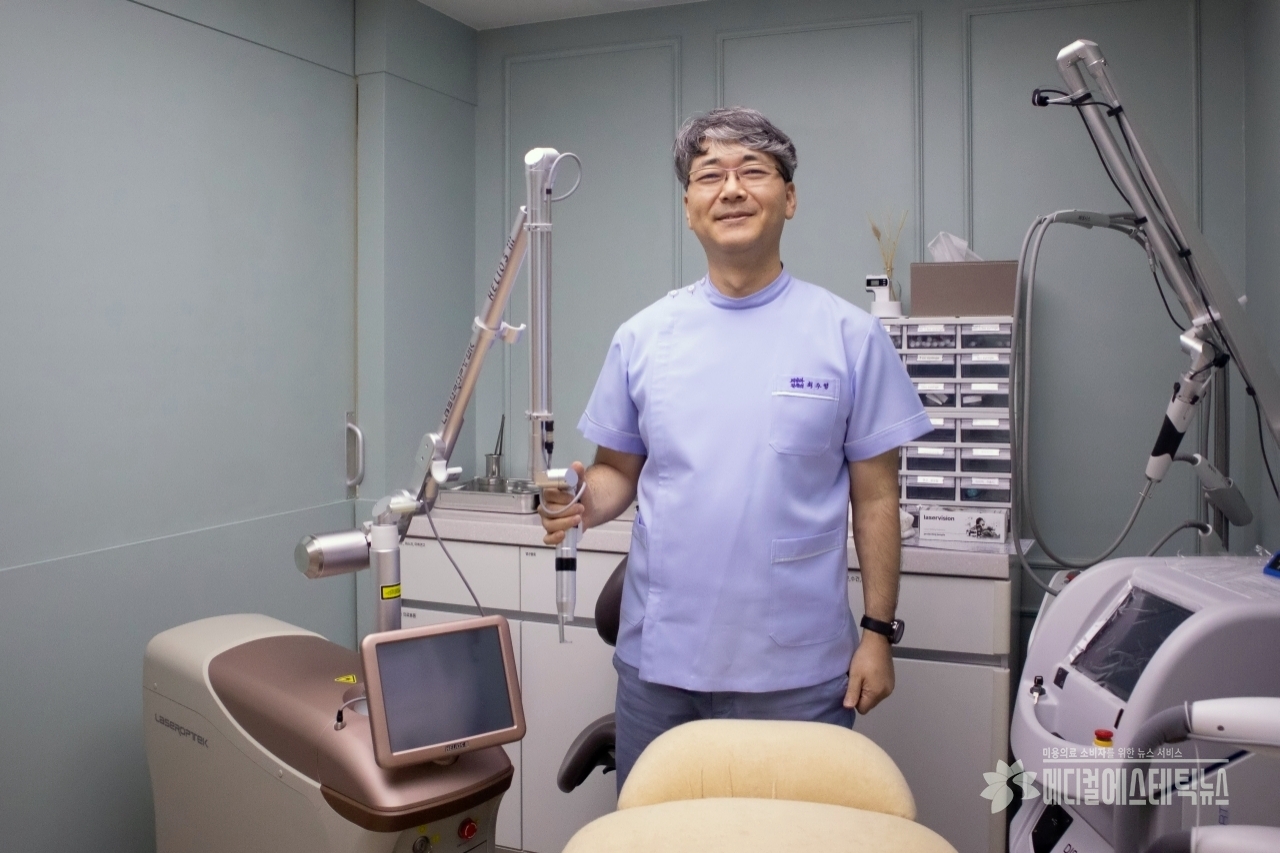“HELIOS III has the superb and stable beam quality,” said Dr. Choi Sooyoung
There is a wide range of aesthetic treatments available among clinics. Despite showing similar clinical outcomes, they may be divided into one or two depending on medical devices, products, or procedures that are being used. “You can see as much as you know!” We will look into some confused treatments which are representing medical aesthetic treatments. We’ll finish the laser toning series, learning how ‘laser toning’ became a representing treatment among dermatology clinics.

Although the laser toning became popular these days, it has only a short history. According to Dr. Choi Sooyoung of Bethel Dermatology Clinic in Busan, the history of laser toning began as the case that the laser toning was used for patients with melasma was published in 2008.
Laser systems for laser toning, Q-switched Nd:YAG laser (QSND) models in the early days didn’t satisfy users entirely in terms of the highlights of laser toning these days. In the previous article, we covered the characteristics of wavelengths as the QSND is the most effective for laser toning. And ‘the quality of laser beam’ is one of the essential factors, too. There was, however, a problem that the laser systems in the early days had unstable laser beams.
The QSNDs in the early days adopted the Gaussian mode, which had the laser intensity focused in the center and lower intensity getting closer both ends. However, the narrow-focused area made treatment difficult or little, and thereby the Top Hat mode was developed to improve this problem. The Top Hat mode enabled the delivery of the laser intensity uniformly to the entire area, allowing the lesions treated evenly.
In a simple phrase, the Gaussian mode looks like a mountain, and the Top Hat mode looks flat on the top like a 'gentleman’s top hat' literally in terms of laser intensity.
Dr. Choi said, “now I’m doing laser toning in combination with several lasers, and I think the beam quality is more important than the types of lasers. The QSNDs in the early days used ‘Gaussian mode,’ which focused in the center, while lasers appropriate for laser toning generally use ‘Top Hat mode’ to allow energy delivery evenly.” And he continued, “due to the delivery of the same energy on the center and the surrounding area of the laser beam, the Top Hat mode is appropriate for current laser toning.”
As time passed, the Top Hat mode has been settled to be a mode for laser toning, and now many laser systems which adopted Top Hat mode was introduced to the market and has come to take up a position for laser toning these days.

As laser toning became the essential dermatologic treatment, it may sometimes create a synergy effect in combination with other therapies.
Dr. Choi said, “a laser system to be combined with will vary depending on a patient’s skin type, condition, and a pigment layer. I do dual toning with ‘Synergy,’ the long pulsed Nd:YAG laser and ‘Discovery Pico,’ the picosecond laser, or with 1927nm wavelength Thulium laser and ‘Fraxis Duo,’ the needle RF system. Such combined therapy will be planned towards raising therapeutic efficiency and safety.”
Although many laser systems are equipped with Top Hat modes, every system’s beam quality may vary.
Dr. Choi revealed, “I think HELIOS III has outstanding durability, stability, and beam quality. The reason I chose HELIOS III was its superiority in laser stability and beam quality. It was HELIOS where ‘Diffractive Optical Element (DOE, the mode that delivers the uniform energy intensity)’ was implemented to a laser toning system for the first time.”
It is said that the appearance of laser toning marked a pivotal moment in dermatology treatment history. It was the appearance of laser toning when acknowledging patients who have been receiving strong laser treatments can receive laser treatments with no downtime. According to Dr. Choi, laser toning became the trend of laser treatment, and other laser systems for pigmentation concerns are going after laser toning method.


